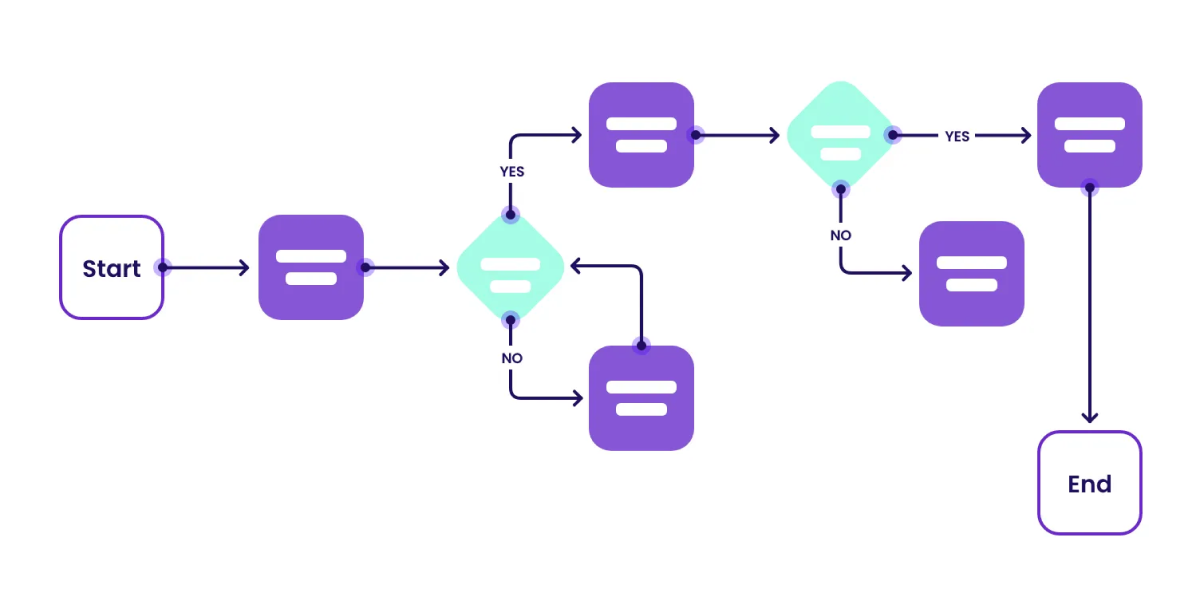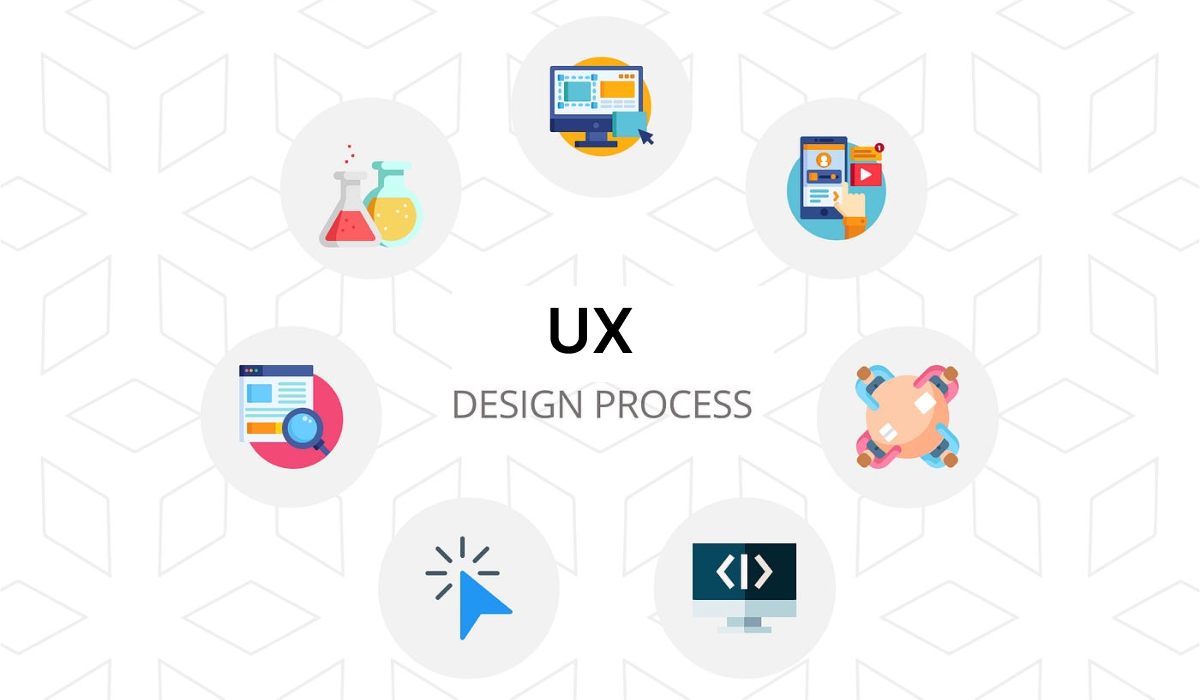2500+
Successful Projects

It is essential to adhere to UX best practices to improve the efficiency and intuitiveness of the product experience.
Which tactics, however, are worthwhile pursuing to raise product engagement?
We'll go over the best practices that complement the concepts of UX design in order to accomplish this.
TL;DR
User experience Design, or UX design for short, is the process of developing products that provide consumers with relevant and meaningful experiences.
Table of Contents
Numerous design concepts for user experience (UX) ensure your goods are user-friendly, attractive, and efficient. Among them is

Let's review ten UX recommended practices for SaaS applications:
Create empathy maps and user personas using analytics, interviews, and surveys to understand user expectations better.
Create your product using familiarity, such as task-, object-, and workflow-oriented navigation techniques.
If you want your visual components to remain consistent, stick to a style guide.
Employ navigational cues like pointers and breadcrumbs to assist users in locating themselves inside the application.
To improve user comprehension and navigation, make use of tooltips and labels that are clear and informative.

By segmenting your user base and designing appropriate onboarding routes, you can personalize user experiences.
Use representative users to access usability regularly and collect feedback using CSAT or CES questionnaires.
Determine and fix user experience friction areas by analyzing behavioral data.
Use focused surveys (CES, CSAT, NPS) to gauge the design's success, gather pertinent input, and make necessary revisions.
With a well-structured knowledge library that addresses frequent problems and user obstacles and provides immediate assistance.
User Experience Design, or UX design for short, is the process of developing products that provide consumers with relevant and meaningful experiences.
It includes the whole acquisition and integration process according to the product's value, usability, adaptability, and attractiveness standards.
UX design aims to create products that are enjoyable to use and useful, which increases their effectiveness and user engagement.
Numerous design concepts for user experience (UX) ensure your foods are user-friendly, attractive, and efficient. They serve as a cornerstone for producing outstanding user experiences.
Here are the fundamentals that all UX designers need to understand:
Prioritize the end users' requirements, preferences, and restrictions at every level of the design process.

By designing it with inclusivity in mind, ensure that all consumers, including those with impairments, can use the product efficiently.
Create aesthetically beautiful user interfaces because consumers think visually appealing items are more straightforward to use.
To guarantee a smooth user experience, keep the product's design components and interactions consistent.
Ensure that the product has simple interactions, clear instructions, and intuitive navigation for ease of use.
Permit users to alter their experience to fit their requirements and tastes better, increasing user happiness overall.
Create with the slightest chance of user error and with simple means for fixing any faults that may be made.
Keeping these guidelines in mind, let's review ten UX-recommended practices for SaaS:
To begin with, UX designers must identify their target market before starting any product development.
Conducting in-depth consumer research using questionnaires, interviews, and product analytics is crucial. This information can help you understand your customers' objectives, the work they must complete with your product, and the best course of action for success. It's the foundation of your design process, ensuring you're well-informed and prepared to meet your users' needs.
Next, use your gathered data to construct customer success playbooks, empathy maps, or customer journey maps. In order to construct user personas based on your users' JTBDs, job titles, use cases, objectives, journey phases, and in-app behaviors, you can also divide your user base into several parts.

The feeling of familiarity is a powerful tool in UX design. When users feel like they've used a product similar to yours, it leads to an intuitive and comfortable user experience. By adhering to familiar design formats, you can reassure your users and instill confidence in your product.
It's crucial to adhere to a format that people are used to because of this.
For instance, you should know exactly which design approach you will use while developing your product's navigation experience. This includes:
Using object-oriented navigation, every-oriented navigation, every aspect of your product is handled as a separate entity. It swaps out the conventional hierarchy and a dedicated page with a more open layout that allows users to switch between features.
Task-oriented navigation organizes the user experience (UX) according to the particular tasks that users must complete. This entails organizing tools and functionality inside the product's interface based on frequently used tasks.
With workflow-based navigation, users follow a predefined, linear route to finish a series of activities or operations.
When visual components like buttons, icons, typefaces, and colors are consistent across the user interface, consumers can easily browse and engage with the product.
It is crucial to create and adhere to a style guide that complements your business's aesthetics. This will assist you in maintaining consistency in layout and design patterns, guarantee that all team members adhere to these standards, and provide consistently high-quality outputs.
Additionally, you may alter the native design settings to suit the aesthetic of your business by customizing the text fonts, color schemes, and logo, for instance, if you're constructing a resource center.
Encouraging users always to know where they are in your app improves user happiness and navigation effectiveness.
Patterns like breadcrumbs, pointers, or spotlights may be used as efficient location indications for this.
Here, the user may initiate an interactive tour by clicking on each item on the checklist to be sent to the appropriate page. Then, customers have portable access to all of the main functions via hotspots, making them impossible to overlook.
Here are some pointers:
For example, you create a support pathway for detractors based on the problems they have identified in their NPS survey replies.
A usability test involves watching a group of representative users as they try to accomplish activities in an app to gauge how simple it is for users to navigate.
These tests provide an excellent way to observe consumers' experiences in real time and get their opinions.
Having said that, it's a wonderful idea to send out CSAT or CES questionnaires to ask consumers for feedback and identify areas for development. Here's a sample survey sequence for usability testers.
Monitor and evaluate consumer behavior to spot any conflicts
Using high-quality data, you can pinpoint and enhance user experience friction areas. This process includes monitoring user behavior, creating a customer journey map, and monitoring essential engagement metrics like churn rate, session duration, and user activity.
For example, funnel analysis may be used to pinpoint the points at which consumers encounter difficulty and abandon the process. In this manner, you may design recommendations to make the onboarding process more interactive or user-friendly in the event of a significant decline in involvement.
Asking your current consumers is the most excellent way to gauge how well your product's design works.
To do this, divide up your user base and focus on in-app questionnaires like CES (customer effort score), CSAT, and NPS surveys to learn about their perspectives. These will tell you how user-friendly your product is, how happy your customers are with it, and how likely they are to promote it.
These focused surveys can help you complete the feedback loop, refine your approach to product creation, and get input pertinent to their particular requirements.
An in-app resource center is a fantastic chance to provide an excellent user experience. It keeps users from encountering friction and switching to another program to fix their problems.
To establish a helpful knowledge base:
Adhering to these UX best practices can increase customer satisfaction, encourage brand loyalty, and foster product expansion.
Your product will have a competitive edge if you research thoroughly, provide consistent assets, and pay attention to your UX design strategy.